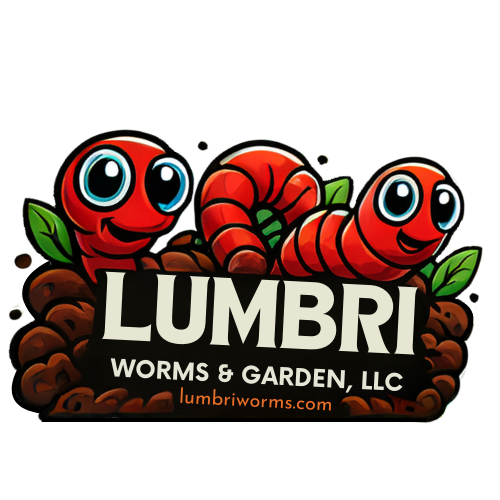
Indoor Composting with Red Wiggler Worms (Vermicomposting) - Lumbri Worms & Garden, LLC
Share
Are you interested in reducing your household waste while creating nutrient-rich compost for your plants?
Indoor vermicomposting, also known as worm farming, might be the perfect solution for you. This detailed guide will walk you through the process of setting up and maintaining a successful indoor vermicomposting system.
What is Indoor Vermicomposting?
Indoor vermicomposting is the process of using worms to break down organic waste materials, such as kitchen scraps and paper, into a valuable soil amendment known as vermicompost. This nutrient-rich compost is a fantastic natural fertilizer for your plants, promoting healthy growth and improving soil structure.
Setting Up Your Vermicomposting Bin
To start indoor vermicomposting, you will need a suitable container, such as a plastic bin with a lid. Drill small holes in the bin for aeration and drainage. Add a bedding material like shredded newspaper or coconut coir to provide a comfortable environment for the worms. Finally, introduce red worms (Eisenia Fetida) to the bin.
Feeding and Maintaining Your Worms
Worms in your vermicomposting bin will thrive on a diet of fruit and vegetable scraps, coffee grounds, tea bags, and crushed eggshells. Avoid feeding them citrus fruits, onions, garlic, and spicy foods. Keep the bedding moist but not soggy, and regularly fluff it up to maintain airflow.
Harvesting Your Vermicompost
After a few months, your worms will have transformed the organic waste into dark, crumbly vermicompost. To harvest the compost, push it to one side of the bin and add fresh bedding and food to the empty side. The worms will migrate to the new food source, allowing you to scoop out the finished compost.
Benefits of Indoor Vermicomposting
Indoor vermicomposting has numerous benefits, including reducing household waste sent to landfills, producing a valuable organic fertilizer, and improving soil health. Additionally, vermicompost contains beneficial microbes that can suppress plant diseases and pests.
Troubleshooting Common Issues
If you encounter problems like foul odors, fruit flies, or overly wet bedding in your vermicomposting bin, don't panic. Adjustments such as adding more bedding, reducing moisture levels, and avoiding overfeeding can help restore balance in the system.
By following this detailed guide to indoor vermicomposting, you can turn your kitchen scraps into a valuable resource for your garden while reducing your environmental impact. Start your vermicomposting journey today and reap the benefits of this sustainable practice!
